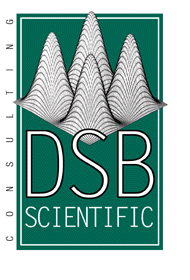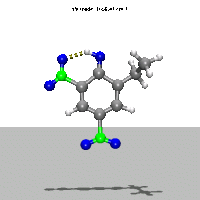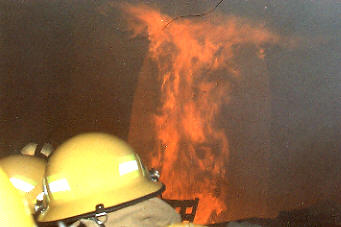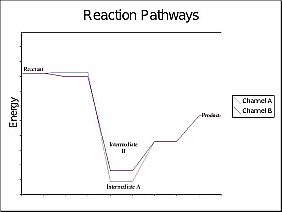




|



DSB Scientific Computational Chemistry Services |
   Services     Products    Resources    |
Computational Chemistry CategoriesComputational Chemistry Services OverviewDSB Scientific is currently running a number of computational chemistry packages on an AMD Athlon64 based parallel system. System nodes run the Linux Operating System. One serial node is available that can be booted to Windows 2000 for MS Windows specific applications.All computational chemistry projects performed by DSB Scientific are conducted under "Non-Disclosure" rules. This means we will not discuss any aspect of your project with any other client or researcher without your explicit permission. Fees: Simulation set-up, data interpretation and report generation billing starts at $200 per hour + $2 per CPU-hour for smaller projects (less than 80 hours human labor). Rates are discounted for longer term projects. Custom code development is billed at $75 per hour (Click here for more information regarding DSB programming services). Contact DSB Scientific about installing and running your simulation packages for you. Interested in saving the set-up, data interpretation and report generation fees? Would you like to run chemical simulations without the cost and overhead of owning your own HPC system? Now you can pay only for CPU time with a user account on DSB's system to run your own simulations. Users pay only $2 / CPU-Hour. Please take a moment to complete the DSB Scientific Computing Survey. There is no obligation and you may complete this survey anonymously. Return to Top Organic Reaction ModelingThe characterization of organic reactions is one of the most common goals of compuational chemistry. Relative energies for products, transition states and intermediates can generally be computed to give the organic chemistry researcher quantitative insight into a reaction pathway. Possible side product candidates may be eliminated based on such energy comparisons.The diagram below shows sample results from such a reaction characterization. This reaction involves a sequence of subtle steps. Shown here is the first such step, itself a sequence of individual mechanistic steps. Two reaction pathways are theoretically possible, and this diagram illustrates that for the first 'half' of the mechanism, Channel A results in a more stable product, but Channel B is lower in the later stages of the reaction. 
Return to Top Reaction Condition OptimizationEver made an undesired side product? Do you find excess side product contamination in your reactions? Gain kinetic or thermodynamic control of your reactions and optimize reaction conditions to maximum product yields. Computational chemistry techniques allow thermochemsitry and kinetic information to be calculated, including solvent effects. These parameters can be input into complex kinetic and equilibrium models to 'map' reaction yield as a function of conditions.In addition, DSB takes an indirect approach to reactant design. Our computational chemistry packages allow chemical systems to be input as "parameter sets," meaning we can design solvent mixtures with optimum properties. It is then a directed goal of the research to produce a solven with the optimized properties. Return to Top Analytical DataProducts of synthesis reactions are often confirmed by spectroscopic analysis such as infrared and NMR spectroscopy. In many cases, 'known' spectra have been measured and catalogued for comparison, but this is not always so. The surest method of structure confirmation is quantitative calculation of the spectra expected for the proposed structure. Computational Chemistry can provide this analytical data.In addition, collecting and interpreting analytical data for newly synthesized compounds can be quite time consuming. In this case, great care must be taken to ensure the assignment of a spectrum to a structure is made correctly. DSB Scientific can compute infrared, ultraviolet-visible and NMR spectra for organic and inorganic compounds. These computed analytical data provide greater confidence in assignment or interpretation of spectra. Return to Top Thermodynamic PropertiesScaling a reaction from laboratory scale to industrial scale generally requires thermodynamic parameters as functions of temperature and pressure. Thermodynamic properties, such as enthaply, entropy and free energy can be computed.In addition, other often needed thermodynamic properties can also be derived from computer simulations. These include real gas law parameters (such as virial coefficients) and solute-solvent effects. You don't need to rely on approximating real systems as ideal for your chemical engineering projects; with DSB's computational chemistry services, accurate constants are available. Technical Due Diligence and project Feasibility Studies are other areas where simulated thermodynamic properties are cost effective solutions when compared to moving ahead blindly. Return to Top Kinetics ModelingComputing reactant and product energies is somewhat commonplace in computational chemistry, but the calculation of kinetic parameters is less common.DSB Scientific uses a variety of computational chemistry techniques to generate reaction rate constants and frequency factors. This allows DSB Scientific to compute reaction rates for reactions. This includes reactions for which specific kinetic experiments have not been done or are very difficult to perform. For example, DSB can use such data in the modeling of detonation reactions. In addition, complicated systems, such as those with many competing reaction (for example, combustions) involve the solution of many rate law equations, each with their own set of kinetic parameters. Computation of both the kinetic parameters and the full system allows computer simulation of complicated reaction systems. Return to Top Detonation ModelingNumerical modeling of detonations provides a cost effective and relatively safe means to study and characterize explosives. Simulations available for explosives and propellants include detonation velocity calculations, pressure vs. time curves, and propellant specific impulse.In-house models are being developed for small rocket motors and rifle propellant dynamics in conjunction with technical staff at Precision Crafted Ammunition. One such project, chamber, is Open Source and freely available via anonymous CVS check-out (note: this project is currently in pre-alpha development). Return to Top Polymer ModelingComputational Chemistry calculations to aid the design and electromagnetic processing of polymers at DSB Scientific are now done in collaboration with Dr. F. Parodi. Together, we provide computational chemistry services of interest to the polymer industry. This includes synthetic catalysis and microwave analysis.Return to Top Phase EquilibriaUsing statistical computational chemistry techniques, DSB Scientific computes phase equilibria parameters. Such phase equilibria simulations can be used to predict boiling temperatures, solvent-solvent partitions and chromatography retentions.Return to Top Computational Fluid DynamicsDSB is currently providing a number of fluid simulation services. These include the numerical simulation of turbulent flows, free stream flows around general shapes and the development of code for super and transsonic projectile drag functions.Return to Top General Statistical ModelingThe techniques used to perform phase equilibria and some thermodynamic property calculations are easily applicable to other fields. These include financial modeling, risk assessments, failure rate modeling and traffic flow analysis.Return to Top |

|
DSB Scientific Consulting . New Bern, NC . 803-413-4768 TEL
© DSB Scientific Consulting 2005-2014 |